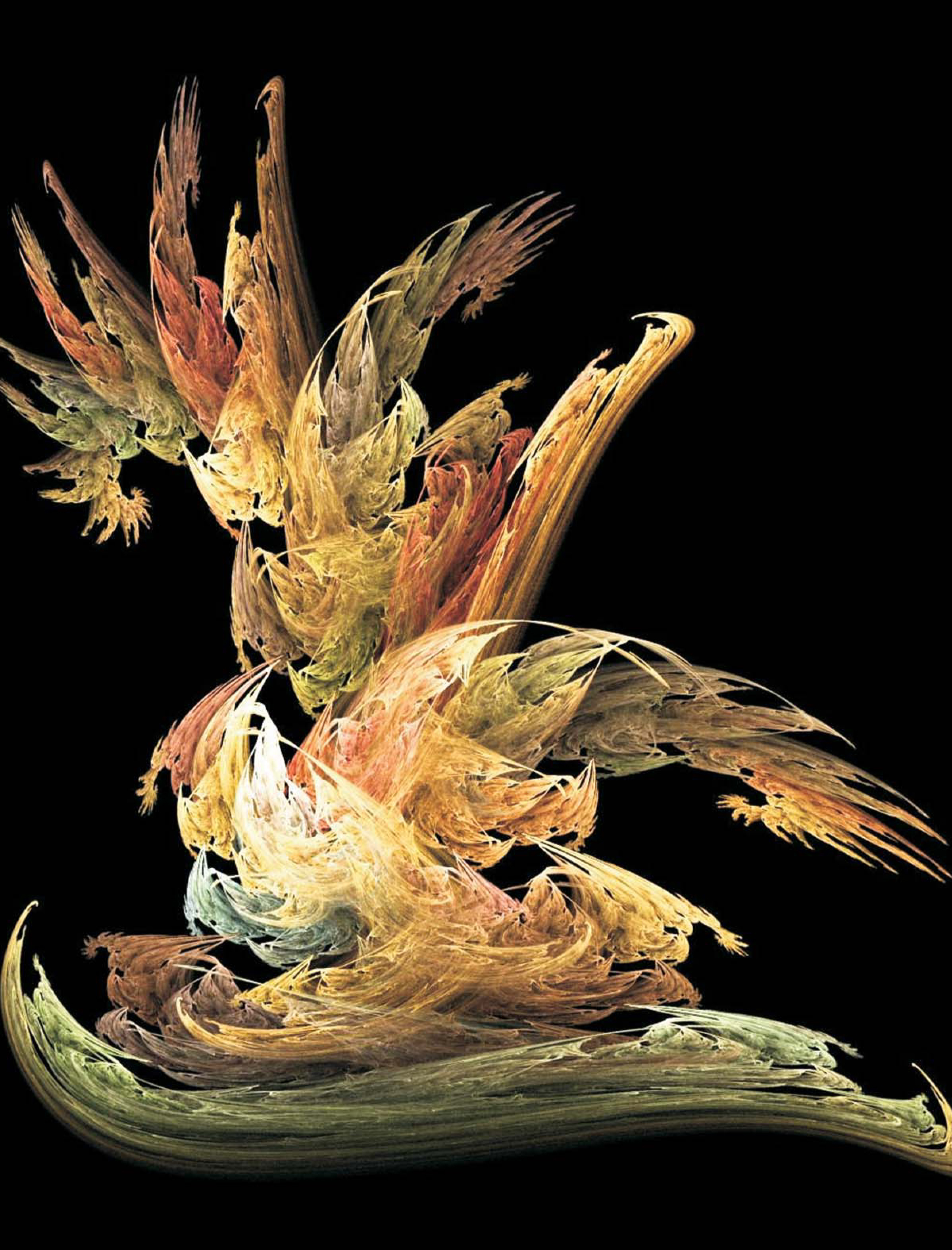Flame fractals
DOI: 10.1063/1.2435695
Although the word “fractal” has been around for just over 30 years, the idea of recursive self-similarity—a colloquial if not technically complete definition of fractals—dates back more than a century. In addition to making eye-catching images, fractals or approximate fractals can be used to describe objects in nature—such as clouds, coastlines, and cauliflower—as well as turbulence and chaotically dynamic systems.
This image was generated using an iterated function system, a 25-year-old method for generating fractals. IFSs plot the set of points that a given collection of functions maps onto itself. For the flame fractal algorithm, used here, the functions can be nonlinear, the density of the solution set is mapped logarithmically onto the pixel brightness, and the system of functions determines the evolution not only in position space but also in color space. The resulting images—such as this one, created with the software program Apophysis—can be quite striking.
To submit candidate images for Back Scatter visit http://www.physicstoday.org/backscatter.html

Vulture over Prometheus, © Roger Johnston.





